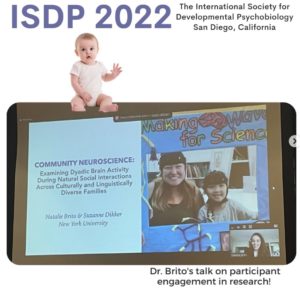We have DEI talks every semester in our lab, considering how we can foster inclusivity and open research in our lab at New York University!
Useful graphic shown to us about equity.
What is DEI?
DEI stands for diversity, equity and inclusion, three words that go hand-in-hand but that don’t mean the same thing. While diversity is the complex interplay of multiple social identities (e.g. gender, race, ethnicity), equity is understanding and giving people resources. The graphic below is one that was shown in a presentation we had - equity is meeting people where they are and fixing the injustices rooted in the foundations of society. Diversity does not mean inclusivity and having a sense of belonging, but it ties into equity and equality.
Why should we talk about all three?
Most research that is published is highly skewed towards WEIRD populations - that is, western, educated, industrialized, rich, and democratic populations - and this creates negative consequences as research findings are not generalizable. It creates a false impression that this reflects society when there is actually a large scope of groups that are not being represented. Diversity, equity and inclusion go together and can create a very positive dynamic in research, academic, professional and corporate settings.

How does it affect research, specifically at my lab at NYU?
I am currently working at a developmental psychology research lab at New York University called ISLAND (Infant Studies of Language and Neurocognitive Development) Lab, where we work with mothers and babies. Most of the studies we conduct are online and mothers are recruited through flyers, Facebook ads, and doctors’ offices amongst others, so we find quite a diverse mix of participants. In our lab meetings, we have discussed what barriers families can face when participating in research studies, and what the roots of these barriers are. Only once these are discussed openly can we start taking steps to promote DEI.
The main barrier we found was accessibility:
- Access to stable technology & wifi → this can impact data quality, if their video is grainy or cuts out, the data becomes unusable and thus their group becomes less represented
- Work schedule → limited time to attend visits
- Access to physical space → one of our tasks, free play, requires room for toys and to play around
- Custody of children & feasibility to participate in a study
Thinking about these issues raises the question of how can we include this population and make sure they are treated equitably?
Who can benefit from learning about DEI?
DEI is interesting because the way it impacts an individual is so unique and specific to their own background, context and experiences. Overall, everyone can benefit from learning about DEI to try and reduce unconscious biases. Specific training which targets how one’s personal social identity (including race, gender, sexual orientation, religion) can impact their daily managerial time would benefit not only the individual themselves, but the people they interact with. Sharing this information amongst the research community is also important, as my lab director did recently at a conference. See the screenshot below and follow the instagram @britobabylab to read more about it: 
Where can DEI initiatives be implemented?
Everywhere! At ISLAND lab, we try to target them at every level on all of our projects - starting from the recruitment of mothers to the coding and follow-up aspect with them. DEI is about making sure that people experience fairness and justice.
When does it occur?
There are common scientific biases that can occur to everyone, as most of these are implicit or unconscious. This means that they have been rooted in the foundations of systems and policies and therefore they can occur often, without us realizing it.
And most importantly… What can we do about it?
There are action steps that we have been taking at ISLAND lab to mitigate these barriers and combat systemic injustices.
- Social identity workshops: this activity centers around an “identity wheel” where we reflected what identities we valued most and were most salient to us in different contexts. This affects how we are viewed and viewed by others in daily interactions.
- Educate and inform ourselves about wider impacts of our studies: we work with EEG caps (a tool used to measure brain activity) and we think about how we can remove barriers and increase inclusivity in participants with different hair types, for example.
- Biases in coding: we code for various mother/child behaviours in tasks that they complete, for example proximity of interactions, positive/negative affect, and here we need to keep in mind that we impose our own expectations of what a “good” relationship looks like based on our upbringing. Training and reliability workshops can help with this.
- Collect data from multilingual families: I am quite involved in translating questionnaires, surveys, and recruitment materials into Spanish to reach broader communities less targeted traditionally to research.
- Following up with families to ask their opinion: we can ask for feedback about how their participation in research went with us!
Let me know what your opinions are on DEI initiatives, and any thoughts you may have about how this could be improved!
Respond
